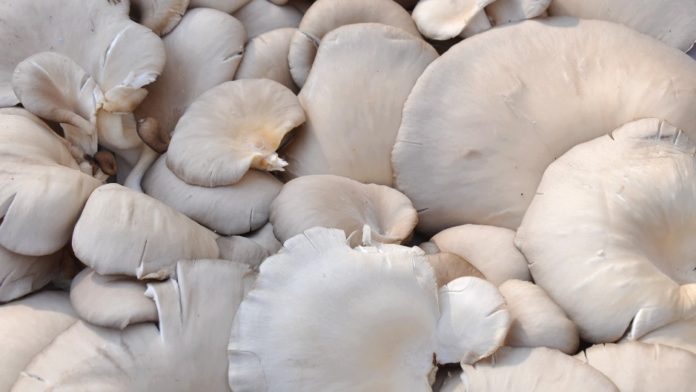Remember the scene from Alice in Wonderland where the caterpillar smokes his pipe while sitting on a mushroom? Well now, UBC is one step closer to making fairy tales come true.
There are six new benches outside the UBC bookstore that are made of living oyster mushroom spores. It turns out that when you mix mycelium, or mushroom roots, into a material such as sawdust, the roots grow and form a material with properties similar to polystyrene.
Just ask IKEA – they hired a company called Ecovative to replace their polystyrene packaging with mycelium biocomposites.
Sowing the SEEDS of sustainability
These benches were created by Joe Dahmen, assistant professor at UBC School of Architecture and Landscape Architecture, and Amber Frid-Jimenez, Canada Research Chair in Design and Technology at Emily Carr University of Art and Design in collaboration with the social ecological economic development studies (SEEDS) sustainability program. The program creates partnerships between students, faculty and staff to promote sustainability through innovative research projects.
SEEDS research has previously resulted in other green campus initiatives including a rooftop garden in the Student Union Building and on-site composting.
Meet with CityPod on-site compost facility at UBC.
Don’t be thick
The one drawback with mushroom biocomposites is that they can become infected with mold or bacteria if they are too thick. Here’s where the architecture knowledge comes into play. By growing the biocomposites in honeycomb shaped molds, you can create structures that are relatively thin, yet mechanically strong.
Prof. Joe Dahmen describes the bench making process.
The hole in the centre of the honeycomb structure also serves another purpose. Unlike the new IKEA packaging that is dried prior to use to prevent mushroom growth, the UBC benches are still alive. The internal structure provides a space for the mushrooms to fruit, without bothering tired pedestrians.
Going brown
These composites also have great potential as alternative green building insulation or construction materials. That way, when we demolish buildings, they can not only fully biodegrade, but also help break down other waste materials.
Maybe the greenest solution is actually brown!










































